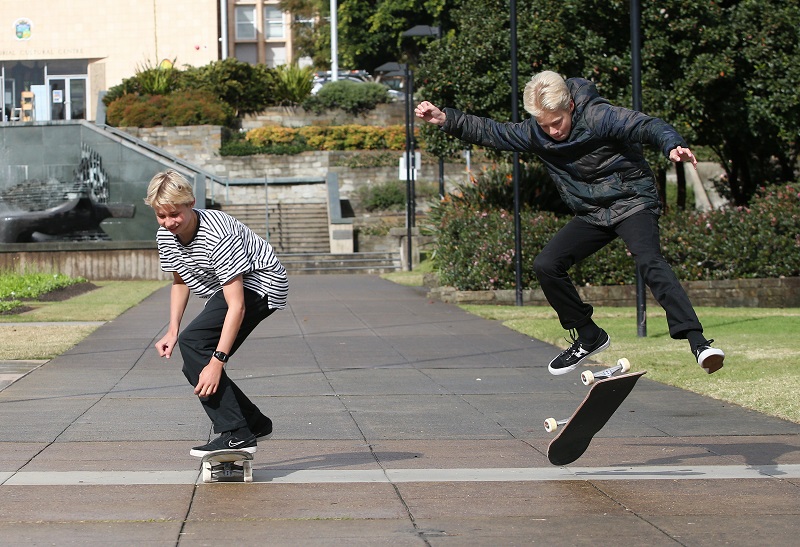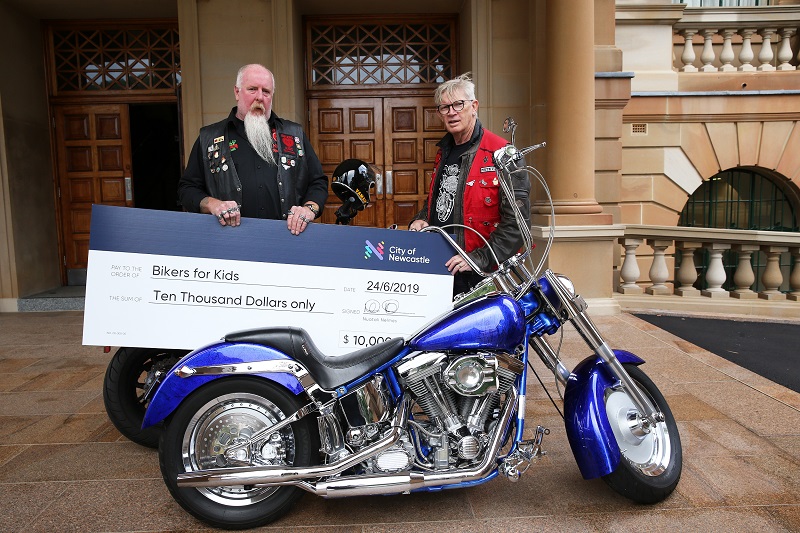The City determined late last year that the Tennis Club, as manager of the public courts, had been indirectly discriminating against women under the Anti-Discrimination Act 1977 NSW by providing its all-male membership with a discounted hiring fee, and refusing to extend the discount to anyone else.
This unfair arrangement, also a breach of the 2018/19 licence agreement, was brought to the City’s attention by one of Newcastle’s top tennis players, Emma Pollock, in a letter to Lord Mayor Nuatali Nelmes, after Emma had been refused membership on account of not being a man.
Earlier this year the Club changed its pricing structure, in response to subsequent approaches by the City, to extend the discount to casual users of the courts.
But its refusal to date to amend its constitution to allow women to become members is considered unacceptable by the City of Newcastle on the basis that the facilities are public assets.
Below: Lord Mayor Nuatali Nelmes and Emma Pollock
 Accordingly, in a letter to the Club Friday, we wrote:
Accordingly, in a letter to the Club Friday, we wrote:“It has been brought to the attention of the City of Newcastle that the tennis club’s constitution only allows for male members and precludes female members. This is not acceptable as it does not accord with the values of equity and non-discrimination which CN promotes internally and in the community.
“The purpose of this letter is to notify the tennis club that City of Newcastle will not consider offering a further Facility Licence and Management Agreement commencing on 1 July 2019, or thereafter, unless and until the tennis club amends its constitution to provide women members with the same status, rights and obligations.”
From Lord Mayor Nuatali Nelmes:
“I have been supporting Emma Pollock to seek a fair resolution. There is no place in our city for this type of discrimination. We are committed to addressing inequality and creating a caring and inclusive community. This includes making our city’s assets available for the enjoyment of everyone.”
From Emma Pollock:
“Late last year I became aware that I was unable to become a member of Rosebuds Tennis Association because their club’s constitution only allowed men to join. It was also brought to my attention that club members receive a heavily discounted membership rate that females would never be able to access. As a local tennis player and qualified coach, I am passionate about increasing participation in the sport and ensuring equal opportunities for all players. As such, I was extremely disappointed that this blatant gender inequality still exists in this day and age.
I reached out to the Newcastle City Council who have played an integral role in addressing the issue, communicating with Adamstown Rosebuds Tennis Association and supporting gender equality.
Tennis is a lifelong sport and should be made available to those who want to support and be part of their local club regardless of gender, age and skill level. I hope that bringing this issue to the public’s attention will encourage all sporting clubs across Australia to support fairness and gender equality.”

 All successful ESP recipients at City Hall this morning
All successful ESP recipients at City Hall this morning .jpg.aspx)
 Angus and Max Owens will ride in the King of Concrete event in December
Angus and Max Owens will ride in the King of Concrete event in December Wallaroos winger Mahalia Murphy accepting Rugby Australia’s cheque from Lord Mayor Nuatali Nelmes
Wallaroos winger Mahalia Murphy accepting Rugby Australia’s cheque from Lord Mayor Nuatali Nelmes  Darren Young and Stephen Meeks representing Newcastle Bikers for Kids, which is in its 40th year of service
Darren Young and Stephen Meeks representing Newcastle Bikers for Kids, which is in its 40th year of service